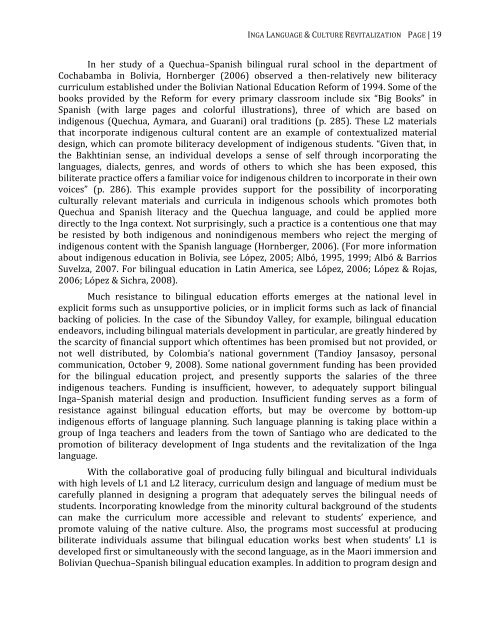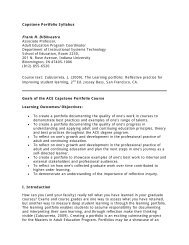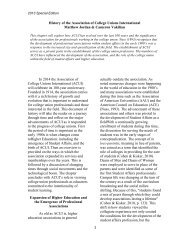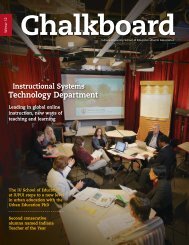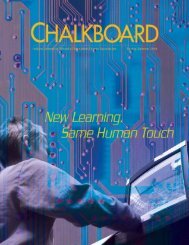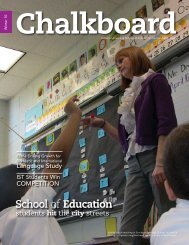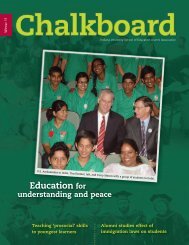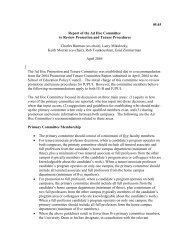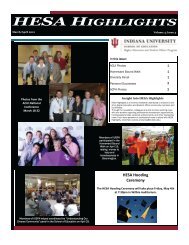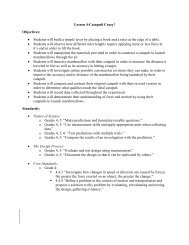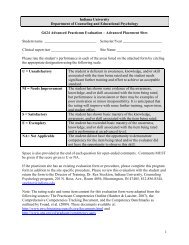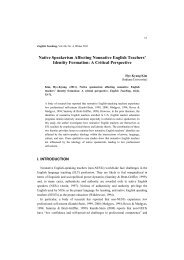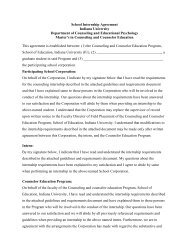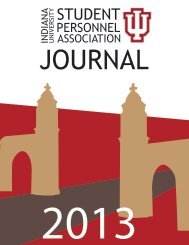Working Papers in Literacy, Culture, and Language Education
Working Papers in Literacy, Culture, and Language Education
Working Papers in Literacy, Culture, and Language Education
You also want an ePaper? Increase the reach of your titles
YUMPU automatically turns print PDFs into web optimized ePapers that Google loves.
INGA LANGUAGE & CULTURE REVITALIZATION PAGE | 19In her study of a Quechua–Spanish bil<strong>in</strong>gual rural school <strong>in</strong> the department ofCochabamba <strong>in</strong> Bolivia, Hornberger (2006) observed a then‐relatively new biliteracycurriculum established under the Bolivian National <strong>Education</strong> Reform of 1994. Some of thebooks provided by the Reform for every primary classroom <strong>in</strong>clude six “Big Books” <strong>in</strong>Spanish (with large pages <strong>and</strong> colorful illustrations), three of which are based on<strong>in</strong>digenous (Quechua, Aymara, <strong>and</strong> Guarani) oral traditions (p. 285). These L2 materialsthat <strong>in</strong>corporate <strong>in</strong>digenous cultural content are an example of contextualized materialdesign, which can promote biliteracy development of <strong>in</strong>digenous students. “Given that, <strong>in</strong>the Bakht<strong>in</strong>ian sense, an <strong>in</strong>dividual develops a sense of self through <strong>in</strong>corporat<strong>in</strong>g thelanguages, dialects, genres, <strong>and</strong> words of others to which she has been exposed, thisbiliterate practice offers a familiar voice for <strong>in</strong>digenous children to <strong>in</strong>corporate <strong>in</strong> their ownvoices” (p. 286). This example provides support for the possibility of <strong>in</strong>corporat<strong>in</strong>gculturally relevant materials <strong>and</strong> curricula <strong>in</strong> <strong>in</strong>digenous schools which promotes bothQuechua <strong>and</strong> Spanish literacy <strong>and</strong> the Quechua language, <strong>and</strong> could be applied moredirectly to the Inga context. Not surpris<strong>in</strong>gly, such a practice is a contentious one that maybe resisted by both <strong>in</strong>digenous <strong>and</strong> non<strong>in</strong>digenous members who reject the merg<strong>in</strong>g of<strong>in</strong>digenous content with the Spanish language (Hornberger, 2006). (For more <strong>in</strong>formationabout <strong>in</strong>digenous education <strong>in</strong> Bolivia, see López, 2005; Albó, 1995, 1999; Albó & BarriosSuvelza, 2007. For bil<strong>in</strong>gual education <strong>in</strong> Lat<strong>in</strong> America, see López, 2006; López & Rojas,2006; López & Sichra, 2008).Much resistance to bil<strong>in</strong>gual education efforts emerges at the national level <strong>in</strong>explicit forms such as unsupportive policies, or <strong>in</strong> implicit forms such as lack of f<strong>in</strong>ancialback<strong>in</strong>g of policies. In the case of the Sibundoy Valley, for example, bil<strong>in</strong>gual educationendeavors, <strong>in</strong>clud<strong>in</strong>g bil<strong>in</strong>gual materials development <strong>in</strong> particular, are greatly h<strong>in</strong>dered bythe scarcity of f<strong>in</strong>ancial support which oftentimes has been promised but not provided, ornot well distributed, by Colombia’s national government (T<strong>and</strong>ioy Jansasoy, personalcommunication, October 9, 2008). Some national government fund<strong>in</strong>g has been providedfor the bil<strong>in</strong>gual education project, <strong>and</strong> presently supports the salaries of the three<strong>in</strong>digenous teachers. Fund<strong>in</strong>g is <strong>in</strong>sufficient, however, to adequately support bil<strong>in</strong>gualInga–Spanish material design <strong>and</strong> production. Insufficient fund<strong>in</strong>g serves as a form ofresistance aga<strong>in</strong>st bil<strong>in</strong>gual education efforts, but may be overcome by bottom‐up<strong>in</strong>digenous efforts of language plann<strong>in</strong>g. Such language plann<strong>in</strong>g is tak<strong>in</strong>g place with<strong>in</strong> agroup of Inga teachers <strong>and</strong> leaders from the town of Santiago who are dedicated to thepromotion of biliteracy development of Inga students <strong>and</strong> the revitalization of the Ingalanguage.With the collaborative goal of produc<strong>in</strong>g fully bil<strong>in</strong>gual <strong>and</strong> bicultural <strong>in</strong>dividualswith high levels of L1 <strong>and</strong> L2 literacy, curriculum design <strong>and</strong> language of medium must becarefully planned <strong>in</strong> design<strong>in</strong>g a program that adequately serves the bil<strong>in</strong>gual needs ofstudents. Incorporat<strong>in</strong>g knowledge from the m<strong>in</strong>ority cultural background of the studentscan make the curriculum more accessible <strong>and</strong> relevant to students’ experience, <strong>and</strong>promote valu<strong>in</strong>g of the native culture. Also, the programs most successful at produc<strong>in</strong>gbiliterate <strong>in</strong>dividuals assume that bil<strong>in</strong>gual education works best when students’ L1 isdeveloped first or simultaneously with the second language, as <strong>in</strong> the Maori immersion <strong>and</strong>Bolivian Quechua–Spanish bil<strong>in</strong>gual education examples. In addition to program design <strong>and</strong>


